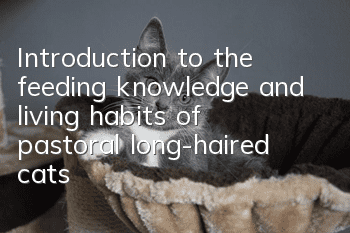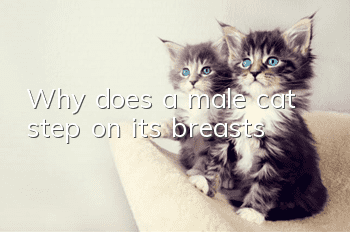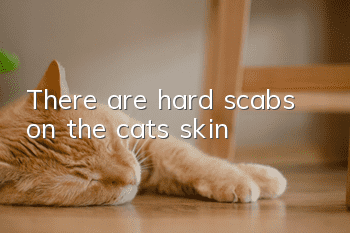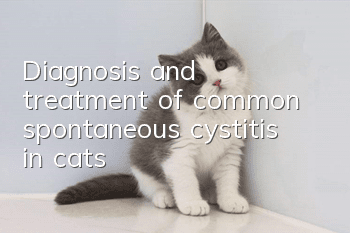Introduction to the feeding knowledge and living habits of pastoral long-haired cats

Long-haired pastoral cats usually have three characteristics: first, the hair length is more than 10 cm. Secondly, the hair is soft, slender and smooth. Third, the neck is hairy and shaped like a wrinkled collar. There are actually many varieties of pastoral cats, among which tabby cats are the most famous. In addition, black cats and calico cats are also pastoral cats. Black cats are black cats, and the interesting thing about calico cats is that they are basically female cats.
1. Introduction to Domestic Long Hair
This breed is playful, docile, friendly, and very loving.
Life span: 15-20 years Average height: 20-30cm Average weight of female cats: 3.6-5.4kg Average weight of male cats: 5.4-7kg Fur: 5-15cm long fluffy hair, available in various colors and patterns, including Solid, tortoiseshell, patched tabby, tabby and smoky Body type: Medium, strong, elegant Grooming: High maintenance, brush daily Similar breeds: Domestic short hair, Domestic medium hair Health status : Usually very healthy due to diverse gene pool, watch out for overeating, diabetes, joint pain
2. Pastoral long-haired cat personality
Loyal, loving, smart, friendly, getting along well with other cats, suitable for cat-loving families, people looking for companionship, and people who need to catch mice. Each cat has its own unique personality and is usually gentle and doesn't need to be the center of attention, but doesn't hide away all the time. All have a strong desire to hunt and prey drive, and the ability to put it into practice. Makes excellent family pets, especially for children who know how to handle cats. They can be playful and treat children like just another playmate. Whether a cat can get along with other pets depends on the cat's personality. It usually gets along better with cats and dogs, but not with small pets (reptiles, rodents, birds). You can expect them to be placed with "huntable" prey. What is the result.
Vitality
⭐⭐⭐
Training
⭐⭐⭐⭐
Health
⭐⭐⭐⭐
Lifespan
⭐⭐⭐⭐⭐
Social
⭐⭐⭐⭐
3. Feeding guidance
Diet: Choose high-quality cat food, grain-free dry cat food is recommended, with a minimum protein of 40%, and be careful not to overfeed. Exercise: Although they prefer to spend their time hanging out and catching mice, ensure at least 20 minutes of exercise every day, cat teasers, feathers, laser pointers are all good interactive toys. Training: You can train it in many skills, such as fetching things, coming when called, walking on a leash, and even learning to use a toilet! Long-haired cats are naturally clean and will instinctively bury their excrement. The scavenger only needs to teach them to identify cat litter. Just the basin and location. Grooming: This is the most troublesome part of the routine, they have some help to keep it neat and clean, brush it twice a day. If you have any form of cat allergy, you should avoid contact with long-haired cats. Trimming their claws is also important. If the claws grow too long they can curl back and start to irritate or even dig into the pads. Be sure to check their claws at least twice a month and provide a good scratching post or pad. Healthy: A very hardy and healthy variety. Common minor illnesses that can be prevented include worms, fleas, allergies, and urinary tract infections; less common serious illnesses include cancer, diabetes, feline leukemia virus, and feline immunodeficiency virus.
4. Relevant knowledge
Pastoral long-haired cats are not a specific breed. They are the common name for all mixed-blood long-haired cats. They are the second most popular cat in the United States, second only to pastoral short-haired cats. Don’t confuse the Pastoral Longhair with the American Longhair, they are not the same breed at all. The former is a hybrid breed developed through years of breeding, while the latter is a purebred cat from the same line as the American Shorthair. Since the lineage of long-haired cats cannot be traced, many people believe that long-haired cats are the result of recessive genetic mutations. Others believe that long-haired cats are descendants of Pallas' cats or Manul cats. Mixed breeds are common at cat shows around the world, with many major cat shows allowing both Pastoral Longhair and Pastoral Shorthair cats to compete. According to the International Feline Federation (FIFe), the Pastoral Longhair appears as any eye color, all coat colors and patterns, any coat length or texture, and any length of tail. Other organizations, such as the World Cat Federation, may have stricter requirements. Pastoral longhair cats are excellent mouse hunters. When the Black Death swept across Europe in the mid-1600s, it helped cull rodents to combat the spread of the plague. They are also frequent guests on seagoing ships, helping to hunt stowaway rats and prevent them from spreading diseases. The most famous pastoral longhair cat is a London street cat named Humphrey, who hunts rats around the British Prime Minister's private estate at No. 10 Downing Street. Later, he was promoted to the "Mouser to the Cabinet Office". There is a salary of 200 pounds per year, paid by the government.
- What should cats pay attention to when drinking water?
- European shorthair cat personality traits
- How to determine if your cat is pregnant?
- What to do if a Himalayan cat coughs
- Introduction to common diseases of American shorthair cats, shorthair cat care!
- Are you still troubled by cat ear mites? How to prevent and treat cat ear mites!
- Why does a cat cry like a baby?
- What is the function of a cat’s claws?
- How to train a cat to remember its own name
- Under what circumstances does a cat need to eat nutritional paste? You will understand after reading this!



